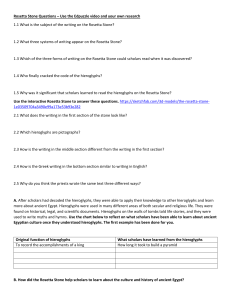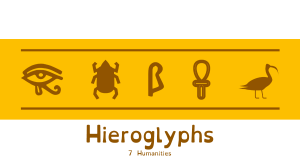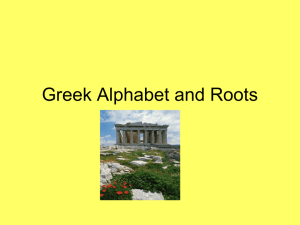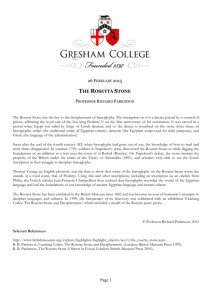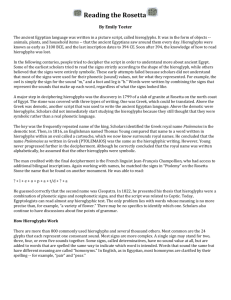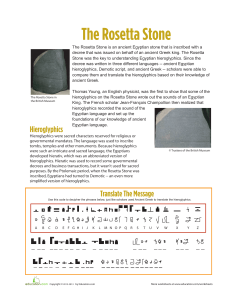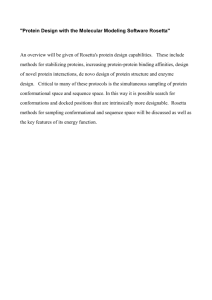The Rosetta Stone and Hieroglyphics
advertisement
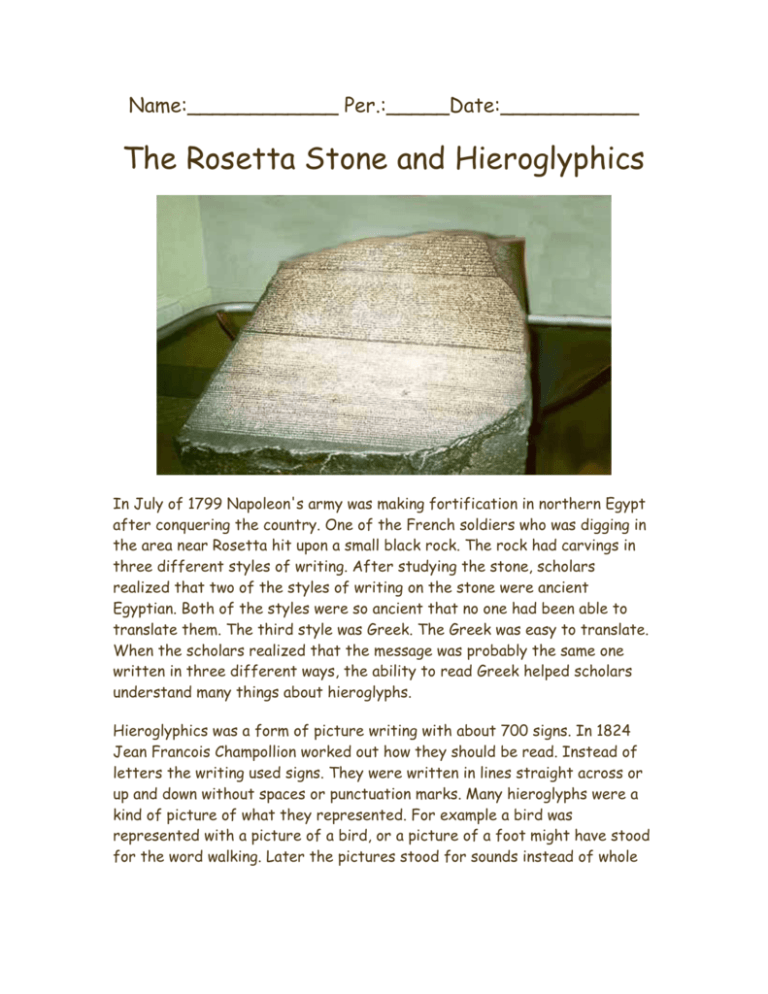
Name:____________ Per.:_____Date:___________ The Rosetta Stone and Hieroglyphics In July of 1799 Napoleon's army was making fortification in northern Egypt after conquering the country. One of the French soldiers who was digging in the area near Rosetta hit upon a small black rock. The rock had carvings in three different styles of writing. After studying the stone, scholars realized that two of the styles of writing on the stone were ancient Egyptian. Both of the styles were so ancient that no one had been able to translate them. The third style was Greek. The Greek was easy to translate. When the scholars realized that the message was probably the same one written in three different ways, the ability to read Greek helped scholars understand many things about hieroglyphs. Hieroglyphics was a form of picture writing with about 700 signs. In 1824 Jean Francois Champollion worked out how they should be read. Instead of letters the writing used signs. They were written in lines straight across or up and down without spaces or punctuation marks. Many hieroglyphs were a kind of picture of what they represented. For example a bird was represented with a picture of a bird, or a picture of a foot might have stood for the word walking. Later the pictures stood for sounds instead of whole words. After this Egyptians could spell out words like we do today. The Rosetta Stone can now be seen in the British Museum in London.
